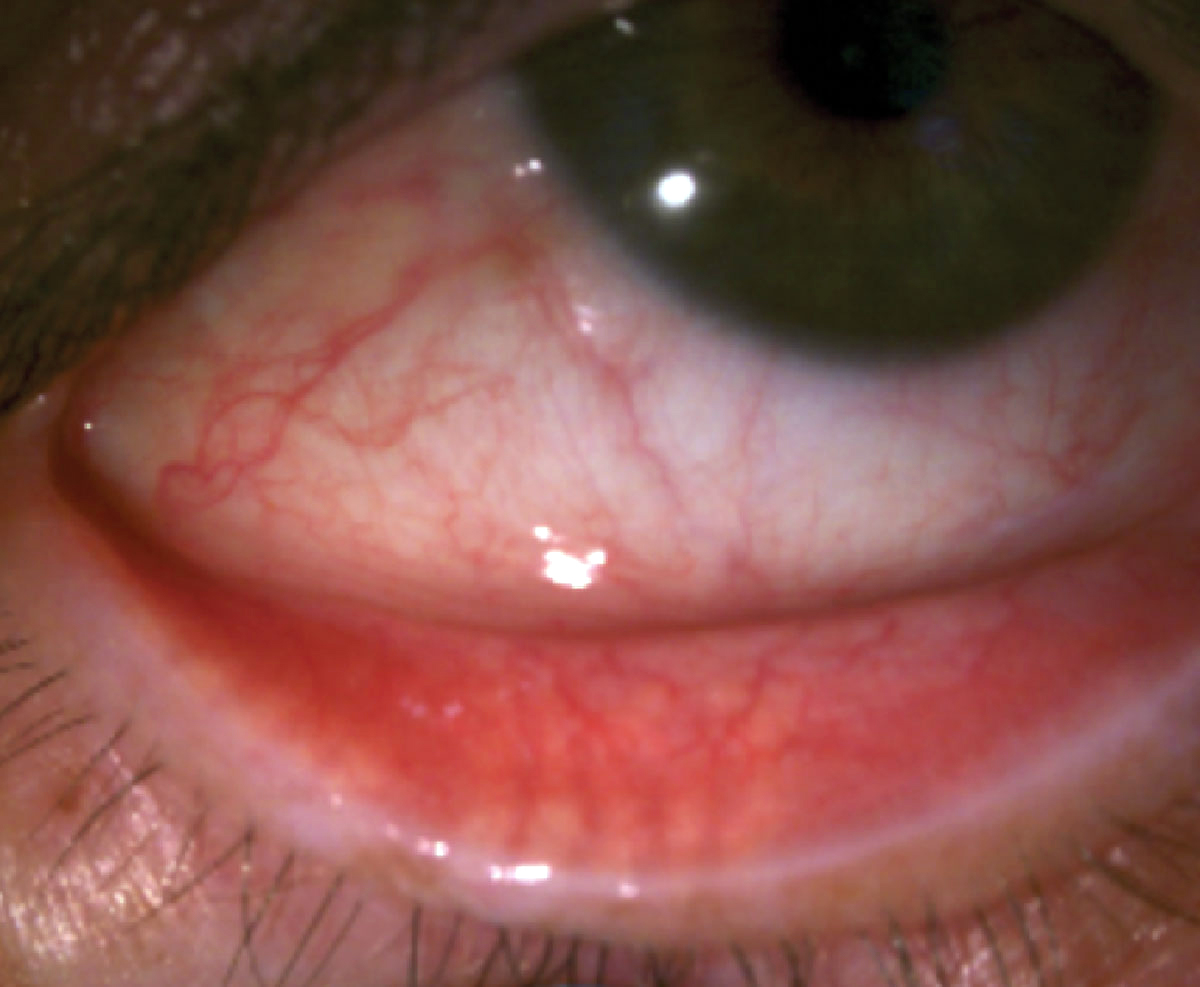 |
| Eyelid vascularity, the sign most closely associated with inflammation in this study, is also the MGD sign most closely linked with rosacea, a condition presenting with erythema, papules and telangiectasias in the facial skin. Photo: Mila Ioussifova, OD, and Hardeep Kataria, OD. |
As with dry eye itself, meibomian gland disease (MGD) is an umbrella term comprising a number of abnormalities, each presenting with various signs, and clinicians would do well to bring more specificity to their diagnoses for the sake of greater precision in treatment. In a recent Cornea paper, experts wrote that separating various MGD signs and their relationship to different aspects of the disease pathophysiology is key for developing future targeted therapeutics. This paper investigated the potential associations between MGD signs, dry eye metrics and inflammatory proteins. They found that different MGD features seem to be driven by different pathophysiological mechanisms.
In the study, a total of 40 South Florida veterans (95% male) with signs of MGD were administered symptom questionnaires and underwent ocular surface evaluations. The researchers also extracted tear proteins from Schirmer strips and analyzed them for 23 human inflammation-related proteins.
They reported that eyelid vascularity, meibum quality and meibomian gland dropout correlated with higher corneal staining and reduced tear production. However, meibomian gland plugging wasn’t significantly associated with these dry eye signs.
The researchers also reported that MGD features differentially related to tear cytokines. Notably, eyelid vascularity emerged as the sign most closely associated with inflammation, with significant correlations with several inflammatory cytokines, including interferon-gamma-g, IL-4, IL-17A, MMP-2, C-X-C motif chemokine ligand 5 and tumor necrosis factor alpha. Multivariate models showed that IL-4 was significantly related to eyelid vascularity. The other signs were less related to inflammation.
This study demonstrates that “various aspects of MGD may have different underlying contributors, with inflammation relating most strongly to the presence of eyelid vascularity,” the researchers concluded in their Cornea paper. “Our current treatment of MGD doesn’t differentiate between various presentations, and it’s not yet clear which patient groups would benefit most from anti-inflammatory vs. another treatment modality, such as heat and massage.” They emphasized that understanding MGD pathophysiology will aid development of targeted therapeutics and improve patient care and quality of life.
Kim CK, Locatelli EVT, Prislovsky A, et al. Is meibomian gland dysfunction one disease? Heterogeneity among phenotypes. Cornea. April 2, 2024. [Epub ahead of print]. |


